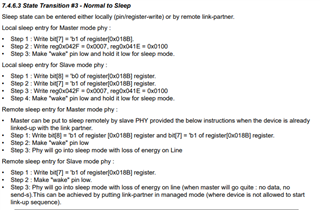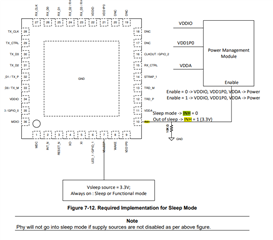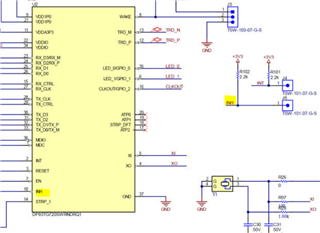Other Parts Discussed in Thread: DP83TG720EVM-MC
Hi Team,
We have purchased two Evaluation boards, to experiment with implementations on the DP83TG720 PHY. They are connected via an automotive connector and power is supplied by the microUSB. One is a master and the other is a slave.
As mentioned in the manual of the DP83TG720 PHY, i had tried both the local and remote sleep

But the eval boards, did not go to sleep. On further reading, i saw that the implementation for sleep mode required is that an external pull down resistor be placed at the INH pin, for the sleep mode

But on the eval board schematics, for the same phy implementation, below was observed

The INH has a pull-up resistor.
Our query is
1) Does this mean that as the INH pin is not connected to a pull-down resistor it will not go to sleep?
2) Is there sleep/wake-up functionality, present for this model evaluation board?
Thanks in advance
Regards
Aarathi Thomas


